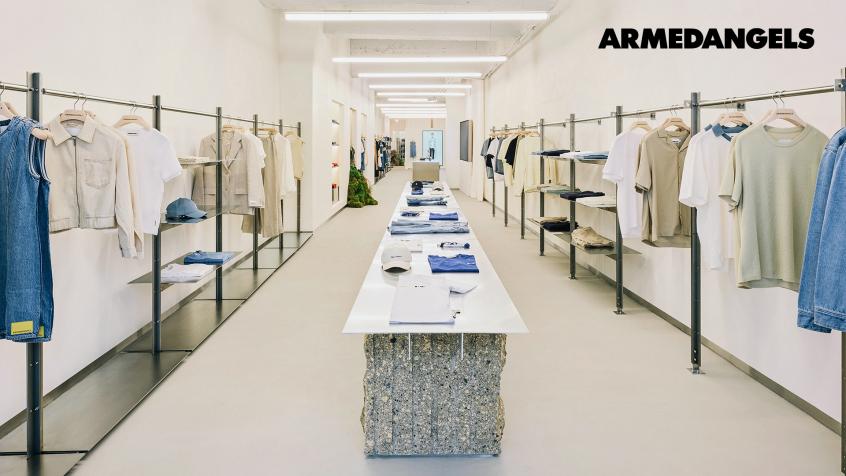Zara Home strategy: How to compete against home decor brands
The brand was launched in 2003, and together with its apparel line, Zara- it generated more than €19,6bn in 2019.

Key takeaways
• Zara Home’s strategy starts with focusing more on the Home Textile department. The category is relatively underrepresented in competing brands so that Zara Home can leverage synergies with their apparel line.
• Zara Home follows a traditional fashion calendar, unlike other native furniture brands.
• Zara Home’s strategy uses a low level of discounts. The share of discounted articles is even lower when compared to its apparel line.
In 1974, a young delivery boy in Coruna, Spain, saved up enough money to launch his apparel brand. In less than 50 years, that delivery boy — Amancio Ortega — built and expanded the Inditex empire- establishing the fashion giant Zara.
Today, the Inditex group includes an impressive portfolio of brands. Among them is Zara Home, which sells home furnishings and decor. The brand was launched in 2003, and together with its apparel line, Zara- it generated more than €19,6bn in 2019.
The global pandemic has not stopped the Spanish group’s expansion and growth. While its competitors are closing stores, Zara Apparel and Zara Home continue to open new retail locations. In late 2020, the brand opened its first giant concept store in the United Kingdom and its largest store to-date in Beijing. The company’s strategy allows the group to reinforce its presence in the fastest-growing fashion market segment.
One question arises: How can a fashion brand thrive and succeed in the furniture and home sector, which is already saturated with well-established competitors?
Focus on what the brand does best
From an assortment perspective, we see that Zara Home’s mix is different from its competitors. The Spanish brand has put a lot more emphasis on home textile than other companies. When we take a closer look at the assortment, we see that Zara Home does not focus on furniture but rather on home decor and accessories.

In comparison, Zara Home’s competitors focus more on stocking furniture and decor than home textile. It comes as no surprise, as these items are the core business of those companies.
It is noteworthy to mention that Monoprix, which is also a fashion brand that decided to diversify its offerings by adding a Home division, does not follow the same strategy as Zara. Zara Home’s strategy is described in its financial reports as taking advantage of both brands’ existing synergies.
Collection patterns: following the fashion calendar
According to Inditex, the parent company of Zara Home, the brand follows the fashion calendar with two significant collections per year: Spring/Summer and Fall/Winter.

We observe that Monoprix also follows the fashion calendar. Fashion brands that diversified their portfolio still seem to closely follow the traditional fashion calendar and offer new arrivals more regularly than specialized brands like Ikea.
However, we note that more inspirational home decor and furniture companies, such as Maison du Monde, follow the seasonal calendar — with a noticeable increase of new arrivals in November for the winter collections.
Minimal discounting vs. competitors and sister brand
Like its sister brand, Zara Home does not rely heavily on discounts and other promotions. Indeed, the Home brand has an even lower share of discounted items compared to the apparel line. Due to the nature of the products, home textiles and decor are less sensitive to trends and fads than clothing. At the same time, Zara Home has more products possibly sold all year long — and more best-selling products — than Zara Apparel.

However, we can see that in comparison to its competitors, Zara Home discounts more often and places itself at the level of Ikea — a brand that barely makes any promotions.
The graph below shows that home furniture and decor brands have a relatively high share of discounted refcos than Zara Home. It is noteworthy to mention that those brands have a more extensive assortment than the Spanish company.

Is this situation a result of the excellent stock management and buying practices of Zara Home, or is it because of a different strategy entirely? What could explain such a high discrepancy in discount levels? To get a more in-depth view of their discount strategy, retailers can access their Retviews account.
Pricing: similar strategy as Zara’s
For Zara Home, the Inditex group followed the same pricing strategy as the Zara one. The positioning is not on the most affordable part of the spectrum, especially when we look only at the Home Textile department. The Spanish brand positions itself at the level of well-established brands like Maison du Monde.

On the other hand, when it comes to furniture and decor, Zara Home has the lowest most frequent price, along with Monoprix. Even in terms of maximum price, neither brand reaches the level of specialized furniture retailers.

Zara Home focuses on home textiles and decor, explaining the wide gap in pricing within that division. The same is true for Monoprix. We can spot a trend: the two fashion brands are diversifying their offers.
Conclusion: differentiation, but with a focus on selling what Zara Home does best
Thanks to the synergies between Zara Apparel and Zara Home, the brand chose to compete against well-established furniture and decor retailers by honing in on the departments its competitors have neglected. This differentiation allows Zara Home to offer a wider assortment of products and seize market opportunities.
Moreover, it looks like working from home will remain the “new normal” for 2021, and we should continue to expect a rise in home decor and furniture spending.
Then, combined with the ability of Zara to spot the right trend at the right time and its precise supply-chain model, Zara Home shows it can compete as strongly in the Home market segment as its sister brand does in the fashion space.
Discover Retviews
Related Content









